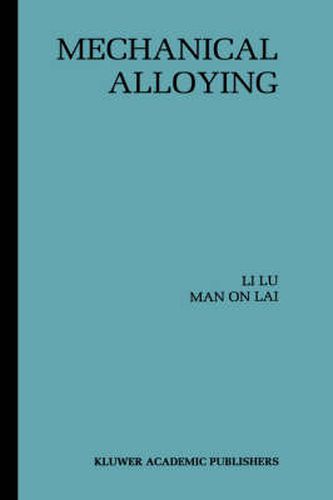Readings Newsletter
Become a Readings Member to make your shopping experience even easier.
Sign in or sign up for free!
You’re not far away from qualifying for FREE standard shipping within Australia
You’ve qualified for FREE standard shipping within Australia
The cart is loading…






This title is printed to order. This book may have been self-published. If so, we cannot guarantee the quality of the content. In the main most books will have gone through the editing process however some may not. We therefore suggest that you be aware of this before ordering this book. If in doubt check either the author or publisher’s details as we are unable to accept any returns unless they are faulty. Please contact us if you have any questions.
Intended as an introduction to the mechanical alloying technique used in developing different materials systems, this work is suitable for undergraduate and post-graduate students, and also for scientists and engineers who wish to gain some understanding of the process. It begins with a brief introduction providing historical background to the development of the mechanical alloying process. There are several different types of ball mills available, some of them specially designed for the mechanical alloying process. Since the resultant materials are milling-intensity and milling-temperature dependent, ball mills should be carefully selected in order to obtain the desired materials and structures. The actual mechanical alloying process is considered and, as it is essential to understand the use of processing-control agents, the physical properties of some commonly used agents are listed. There is coverage of the formation of new materials and mechanical alloying of Al, Ti and Mg alloys and their intermetallics, and the formation of composite materials using this technique is also discussed in detail. Several examples of the mechanical alloying of amorphous materials, an important group of engineering materials where mechanical alloying is commonly employed, are given, and there is a look at the characterization of the alloyed powders.
$9.00 standard shipping within Australia
FREE standard shipping within Australia for orders over $100.00
Express & International shipping calculated at checkout
This title is printed to order. This book may have been self-published. If so, we cannot guarantee the quality of the content. In the main most books will have gone through the editing process however some may not. We therefore suggest that you be aware of this before ordering this book. If in doubt check either the author or publisher’s details as we are unable to accept any returns unless they are faulty. Please contact us if you have any questions.
Intended as an introduction to the mechanical alloying technique used in developing different materials systems, this work is suitable for undergraduate and post-graduate students, and also for scientists and engineers who wish to gain some understanding of the process. It begins with a brief introduction providing historical background to the development of the mechanical alloying process. There are several different types of ball mills available, some of them specially designed for the mechanical alloying process. Since the resultant materials are milling-intensity and milling-temperature dependent, ball mills should be carefully selected in order to obtain the desired materials and structures. The actual mechanical alloying process is considered and, as it is essential to understand the use of processing-control agents, the physical properties of some commonly used agents are listed. There is coverage of the formation of new materials and mechanical alloying of Al, Ti and Mg alloys and their intermetallics, and the formation of composite materials using this technique is also discussed in detail. Several examples of the mechanical alloying of amorphous materials, an important group of engineering materials where mechanical alloying is commonly employed, are given, and there is a look at the characterization of the alloyed powders.